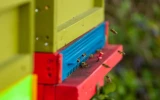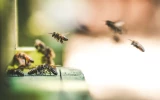How Robber Bees Steal Your Honey - And How To Stop Them
Robbing is not a good thing, whether in the human world or the bee world, but bees will resort to this method for survival. During the nectar dearth season, they will enter other hives and then take their honey stores. This article will expound on how robber bees steal honey and what we can do to stop them.
Robber bees steal honey by attacking weak hives. They will kill resident bees and open wax cells to acquire a great amount of honey. To stop robber bees, it's best to reduce the hive entrance, drape a water-drenched towel over the hive, and avoid dripping honey and sugar water around the hive.
To stop robber bees, we must first understand why they have this behavior and how they do it, devise a way to defend the hive, or even prevent future cases of stealing. Below, we will discuss the signs of robbing beehives and how we can prevent them from happening.
Summary
- Robber bees steal honey from other hives by fighting until the hive owners are killed, then they start tearing off wax caps to get honey.
- Seeing bees hanging around the back of the hive, bees fighting in front of the hive, and dead bees on the ground are some of the signs that robbing has occurred.
- Closing the hives, applying a masking scent, and removing the lids of all other hives are a few practices to be done if you catch a bee robbing incident.
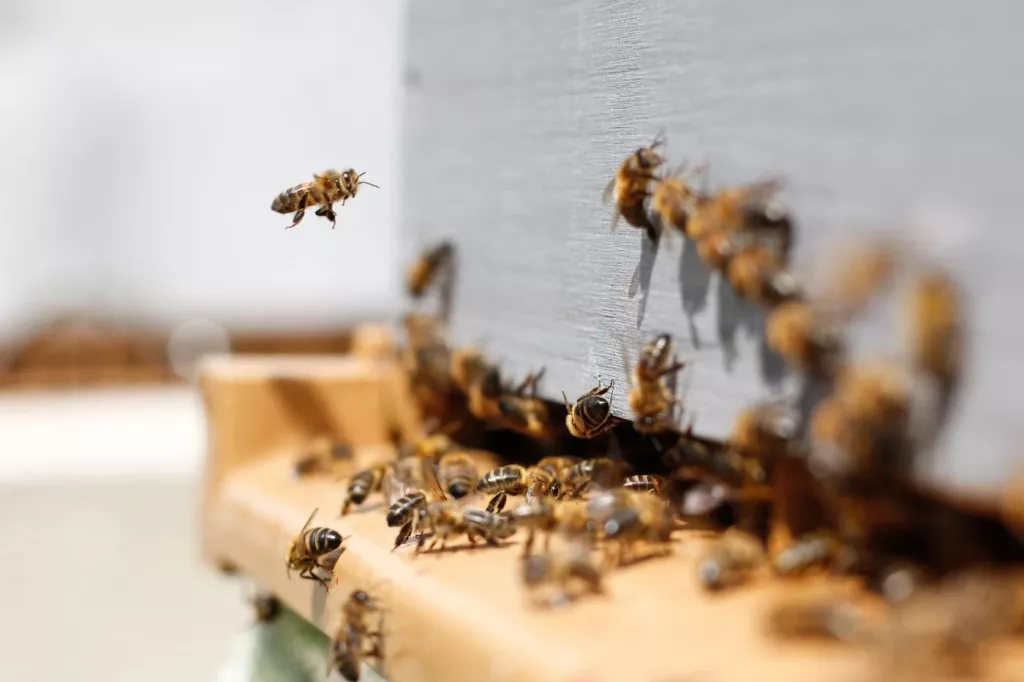
On this page:
How Robber Bees Steal Honey
The reason bees rob other hives is for survival during nectar dearth seasons. Since nectar is scarce, bees will have to find a new source of food.
Once they find a hive with either honey stores or sugar syrup, they will enter the hive and bring home whatever they get. Now, this may have been started by a few intruders only, but when they get back to the hive, they will attract more foragers to come with them to get more resources.
This now signals the fight between the intruders and the original hive residents. This will be observed by bees wrestling and fighting at the hive entrance, with almost two dozen bees involved. Once robbers killed most of the colony, they would start tearing open wax caps covering the honey and getting as much honey as they could.
The manner of their uncapping is so blatant that most of the honey will be exposed, thereby attracting other colonies of robbers or other insect foragers such as wasps, which will further attack the already severed hive, and may even kill the queen bee.
Robbing will continue if resources are available and only stop once they are depleted.
How to Stop Robber Bees
Knowing how we can identify robber bees and how they steal honey, we've rounded up some of the most effective ways suggested by professional beekeepers to stop robber bees in their heinous crime of stealing honey.
1. Close the hive.
When you catch the bees in the act of robbery, the first thing to do is to close the hive. A smoker can be used while doing this to avoid being stung by robber bees and accompanying robbing insects.
Close all possible entrances and reduce the size of the main entrance to a size small enough for a single bee. Leaves or blades of grass can be stuffed in the main entrance. This closes it, but still allows air in to ventilate the hive. Alternatively, you can also use an entrance reducer.
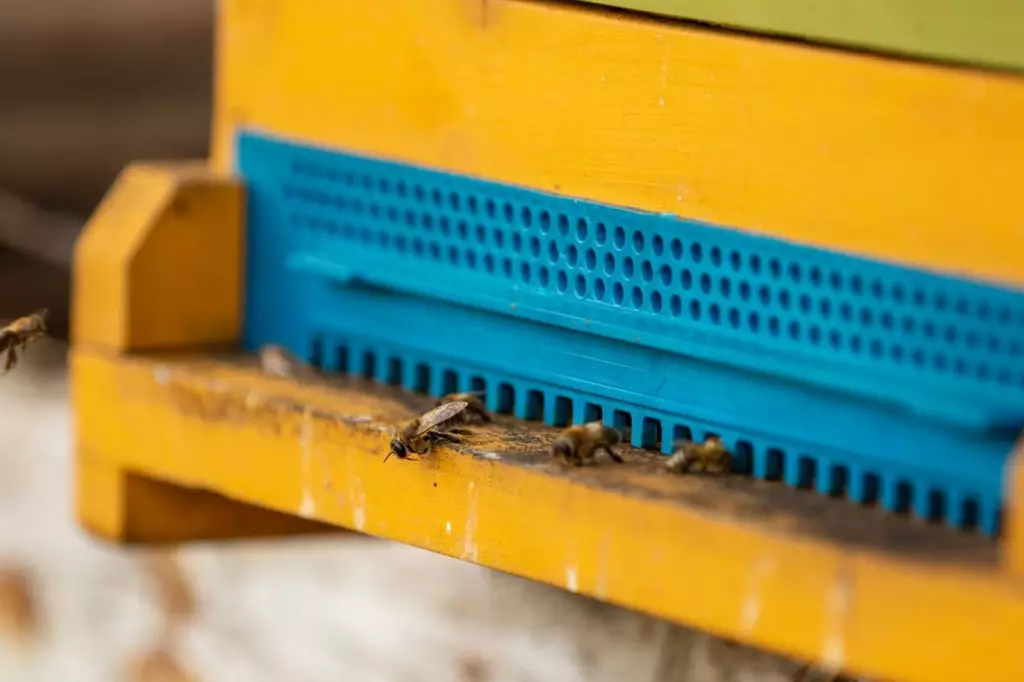
2. Apply a strong-smelling deterrent around the hive entrance.
Vicks VapoRub is the usual product used by beekeepers to mask the scent of the hive. Since Vicks contains strong-smelling compounds such as camphor, eucalyptus oil, and menthol, it confuses the robber bees. Resident bees, however, won't get confused and will still know how to make their way inside the hive.
3. Drape a wet towel around the hive.
Drape a wet towel over the hive to confuse the robbers. Local bees will still be able to come and go from underneath the towel. Also, evaporation from the towel can keep the hive cool. You can keep the hive covered for two or three days and wet it again as needed.
4. Install a robbing screen.
Robbing screens can be bought or made at home. The idea of installing a robbing screen is to create an alternative entrance to the hive. The robbing bees will follow the scent of honey, through which it seeps out, but won't know how to get through because of the screen. Meanwhile, the resident bees know their way around, so they can figure out their way in and out.
5. Remove the lids of all the other hives.
Removing the lids from all the hives in the apiary may be a wild idea, but it works well, according to professional beekeepers. This works if the colony of robbers came from the neighboring hive. The idea behind this is that bees will become so busy defending their hives that they will stop robbing other hives.
This could get problematic, however, if the robber bees are not from your apiary. It also doesn't work for wasps and other robbing insects.
How To Identify Robber Bees and Signs of Robbing
Just because you see bees scurrying around the hive doesn't mean they are already robbing. Although it may be, there are still reliable signs that can be considered when you keenly observe the bees. A few behavioral changes are seen below:
If you see bees hanging around the back of the hive
Like typical robbers, robber bees won't enter the main entrance. They will usually try to find backdoor entrances or squeeze themselves into unusual cracks or holes other than the entrance to get inside the hive. This is why if you see bees hovering at the back of the hive, they are possibly planning their robbery.
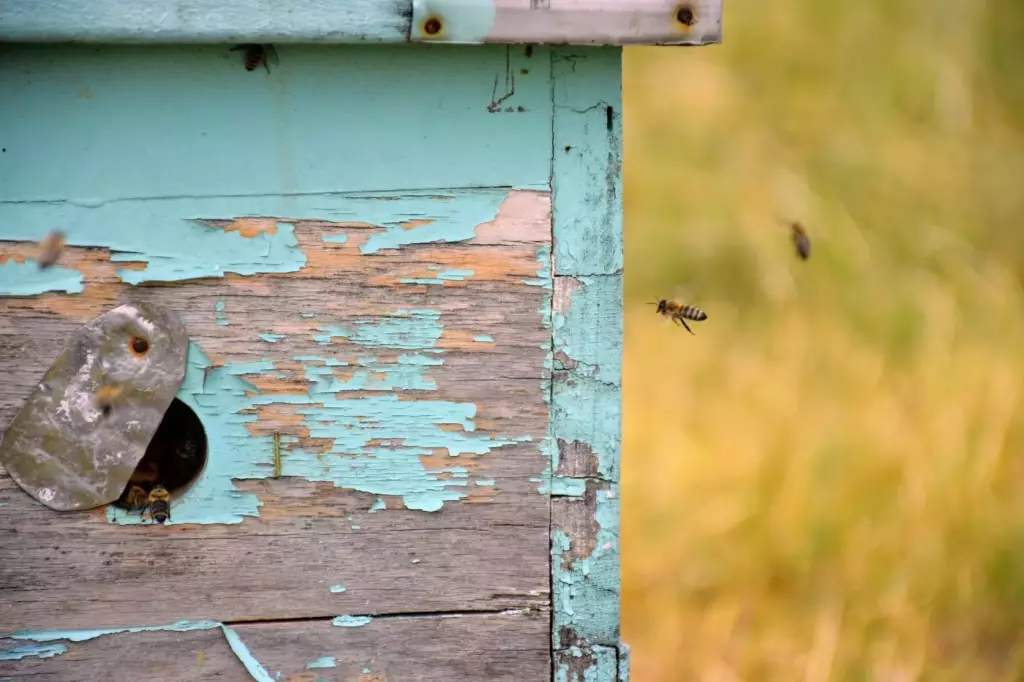
If you see many bees fighting in front of the hive
Seeing bees rolling around in pairs or groups on the landing board or in the air is an indication of fighting. You would also want to take note of bees that are shiny instead of furry, as this characterizes a bee that has gone into a fight. The presence of an unusually large number of dead bees inside and outside the hive also indicates fighting.
If you see bees going inside the hive without pollen on their legs
Normal working bees will carry pollen on their legs when they fly back to their hive. But a good sign that bees don't belong to a certain hive and could be possible robbers is when they do not have pollen on their legs. Robbing bees are also louder than normal bees.
If you see large quantities of wax caps in front of the hive
Wax caps are made by bees to air-tightly seal the wax cells containing honey. Observing large quantities of these in front of the hive means that the hive has been robbed. Robbers will be in a hurry to uncap all honey stores, so they just tear apart the caps or chew them open. Wax caps will also be observed on the bottom floor inside the hive.
How to Prevent Robbing in the First Place
Even when taking care of your bees, prevention is better than cure. It's better to take advanced steps as a beekeeper to prevent a robbery in the hive. Below are some steps you can take before letting your hive be robbed of its hard-earned honey stores:
- Strengthen your colonies. You can do this by equalizing them and combining weak hives with strong ones.
- Only make brief inspections of the hive during the nectar dearth season
- When working on colonies, never work on two colonies at the same time. It's also better to work a little before nighttime, as bees are less active.
- Avoid dripping syrup, nectar, or honey outside the hive. Make sure that when feeding sugar syrup, it is the right amount to be consumed easily by bees. Do not also leave wax, honey debris, or combs exposed in the apiary.
